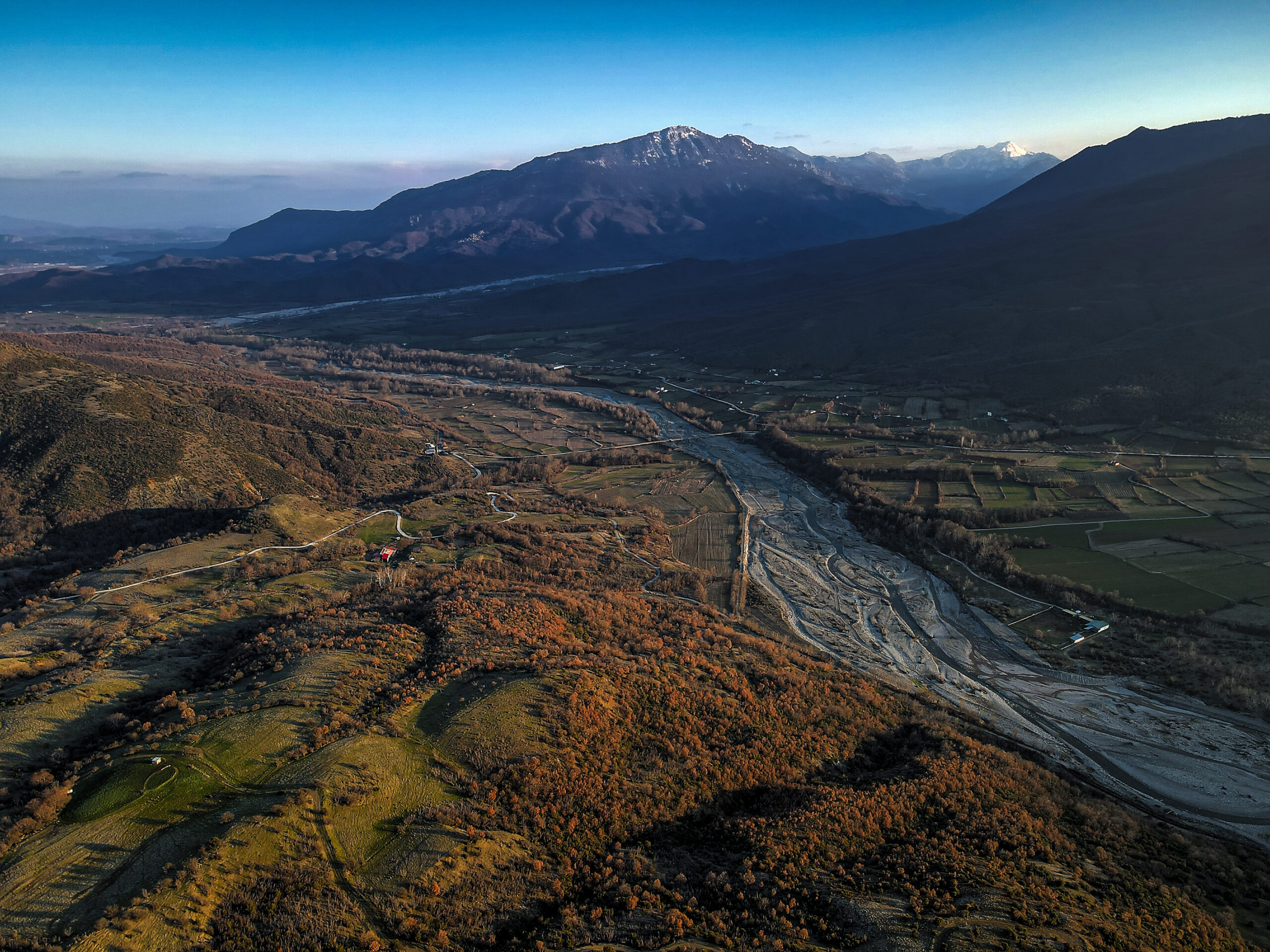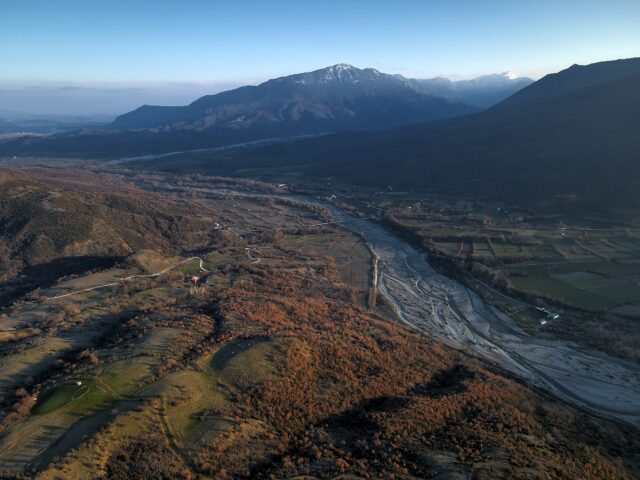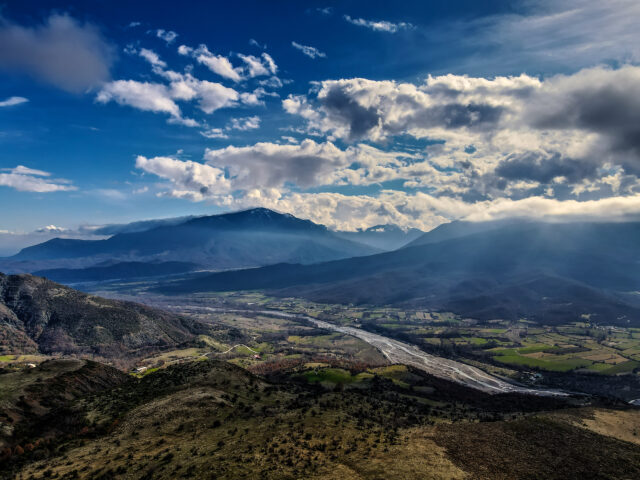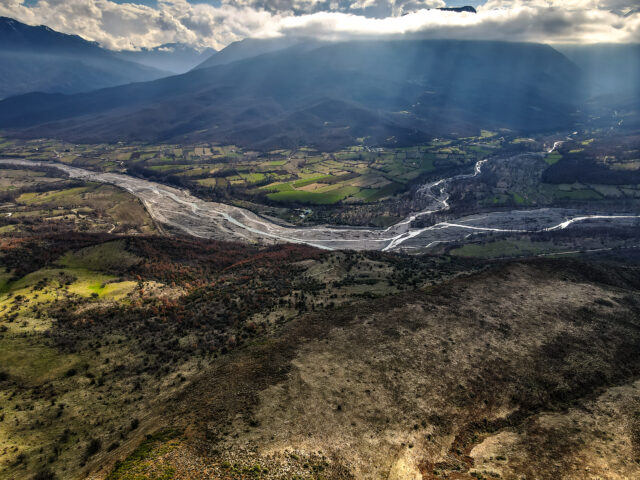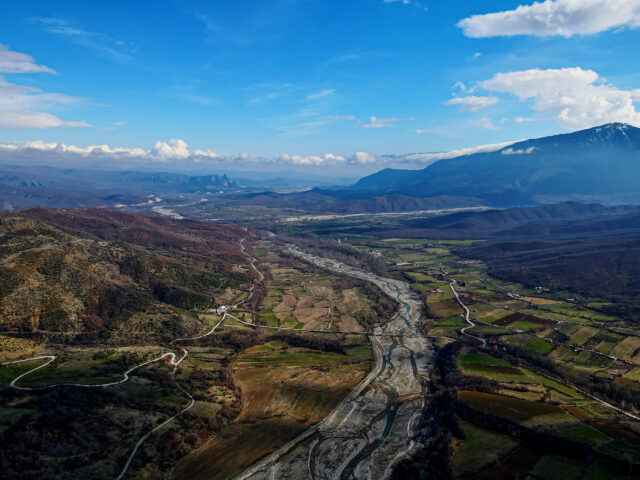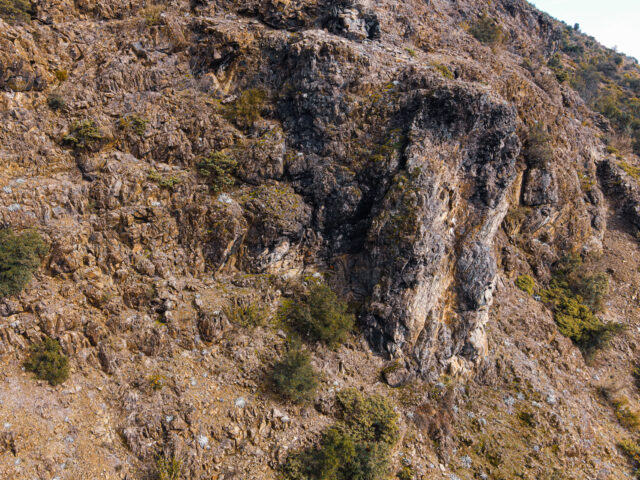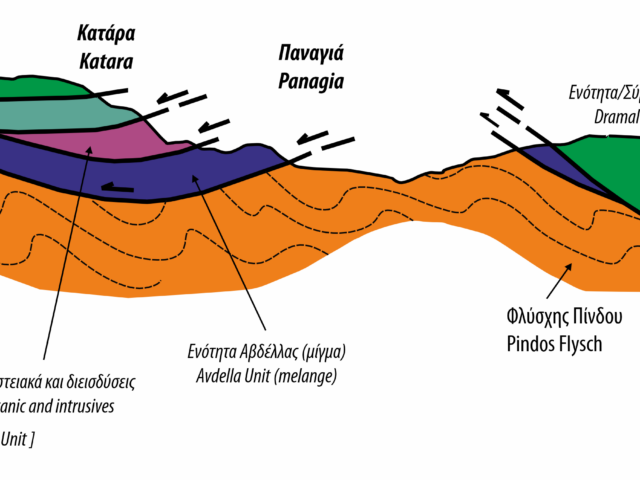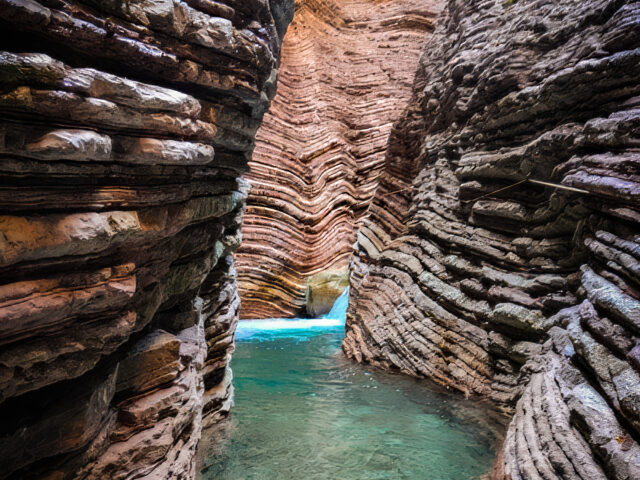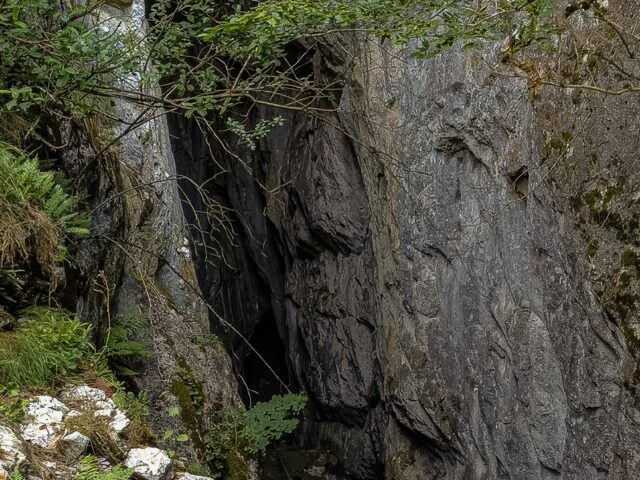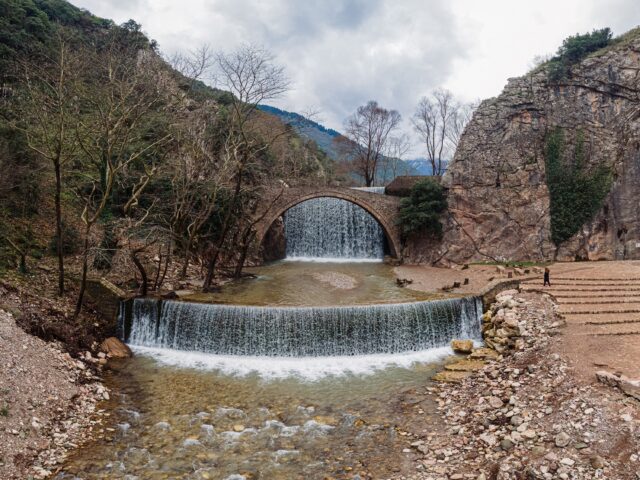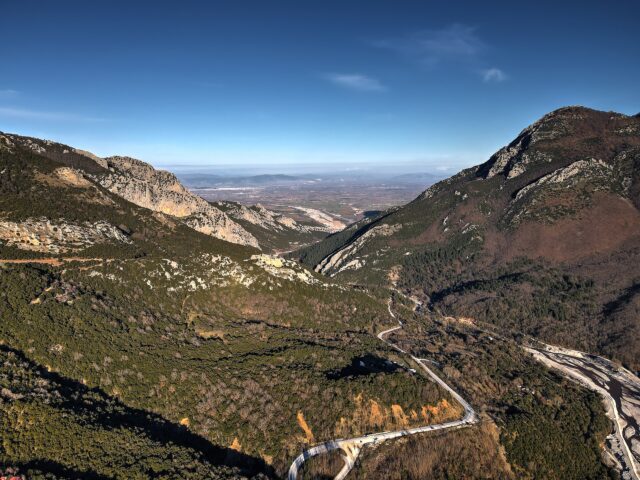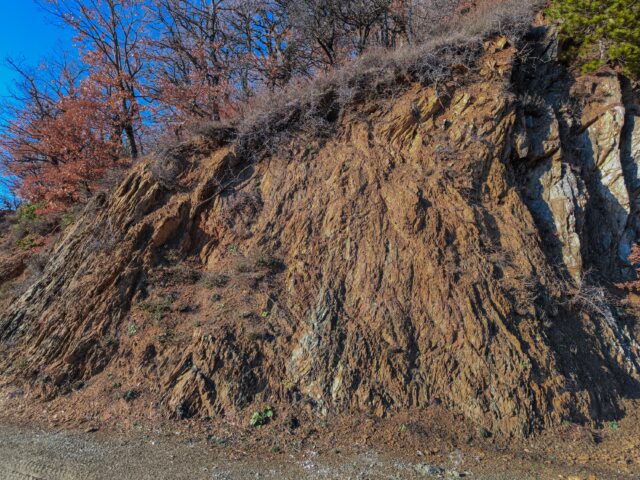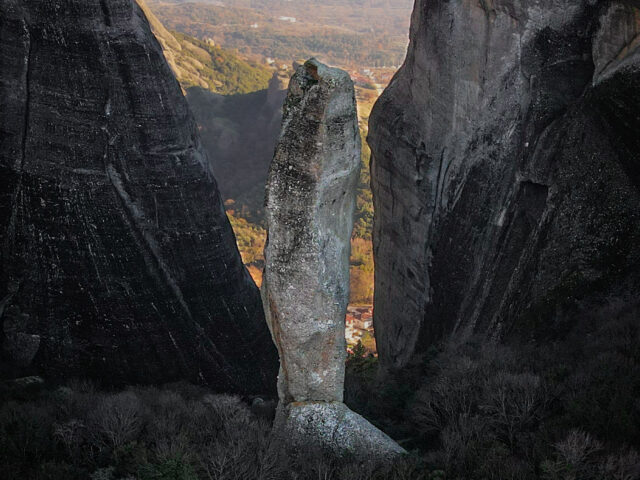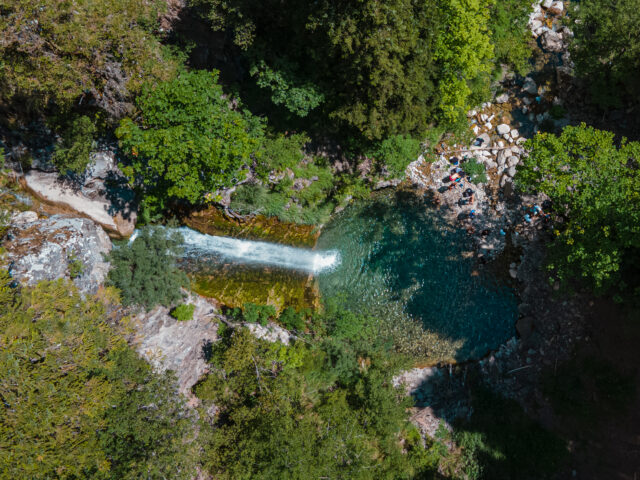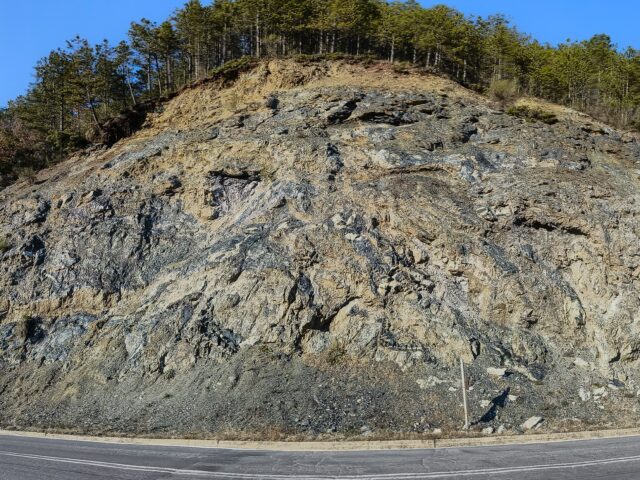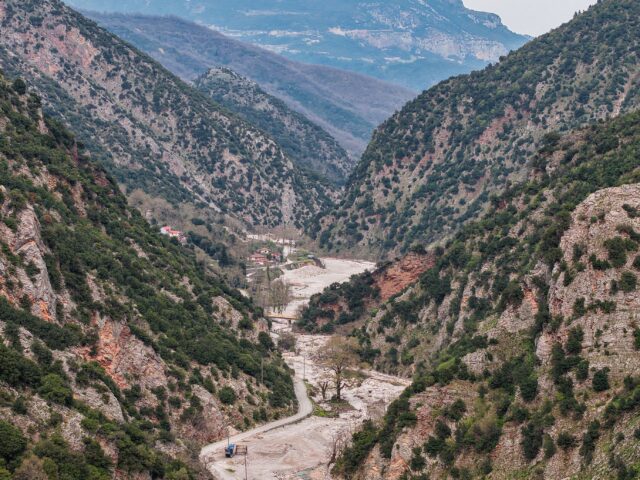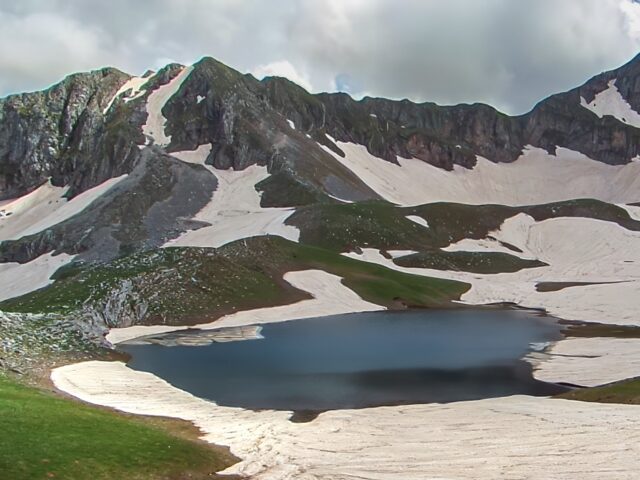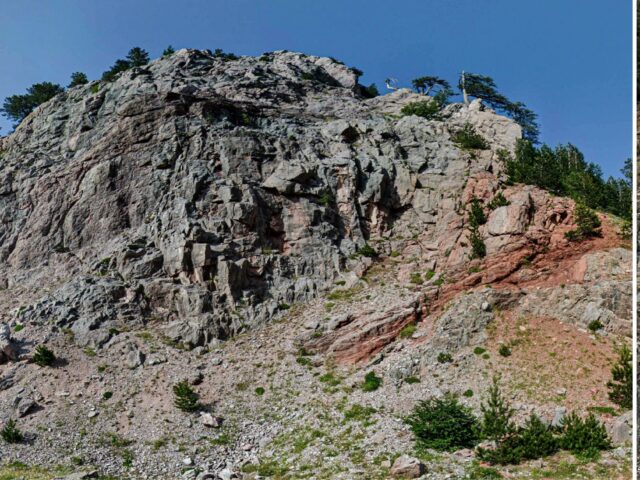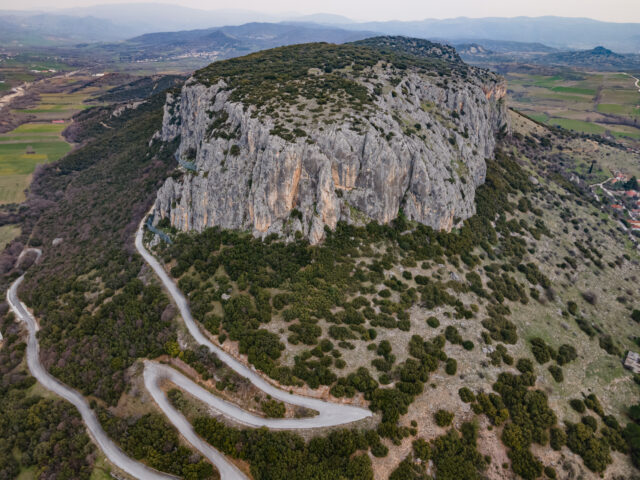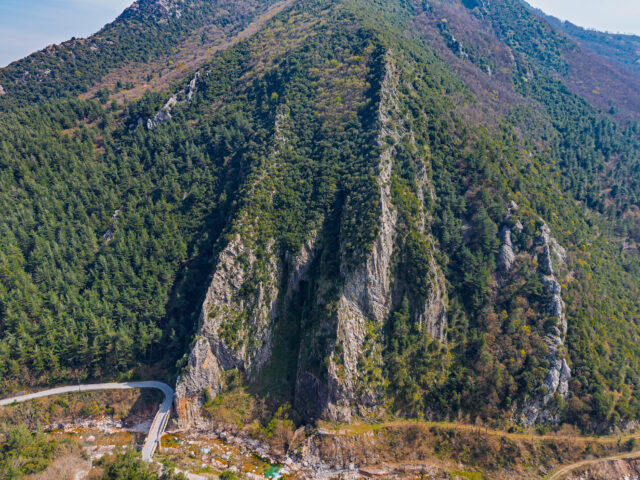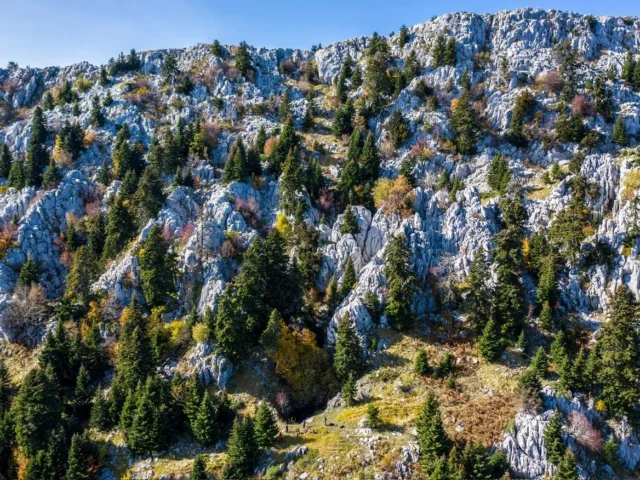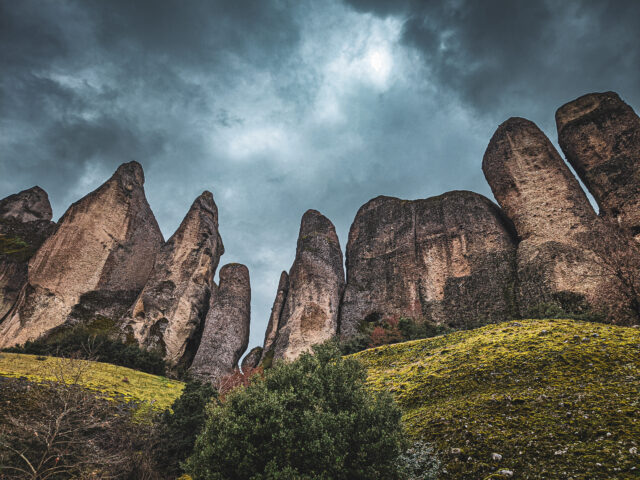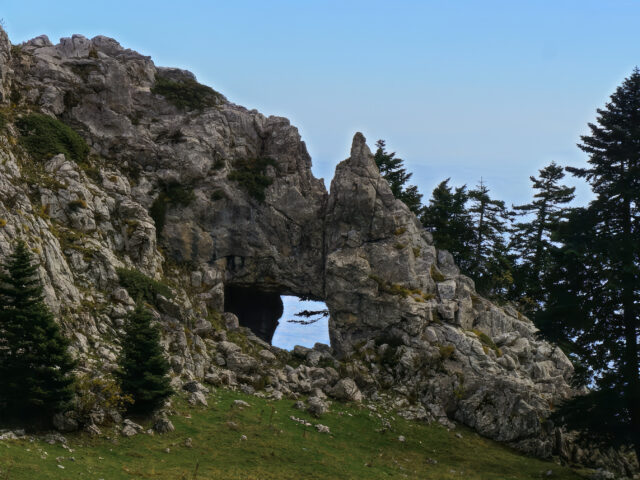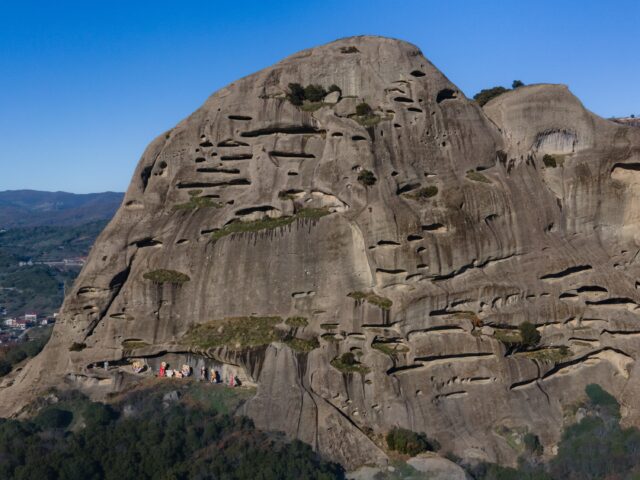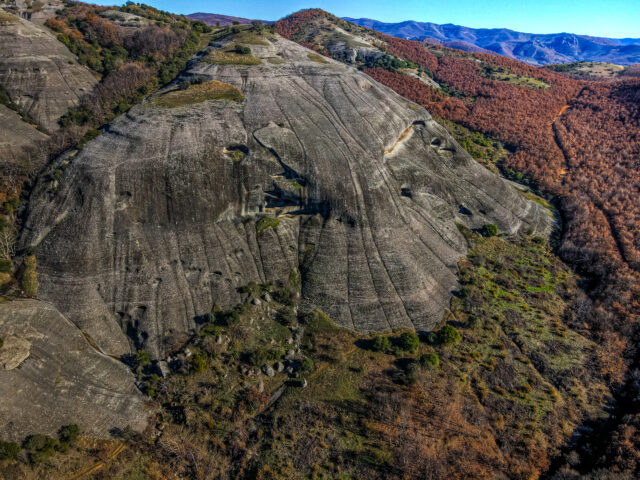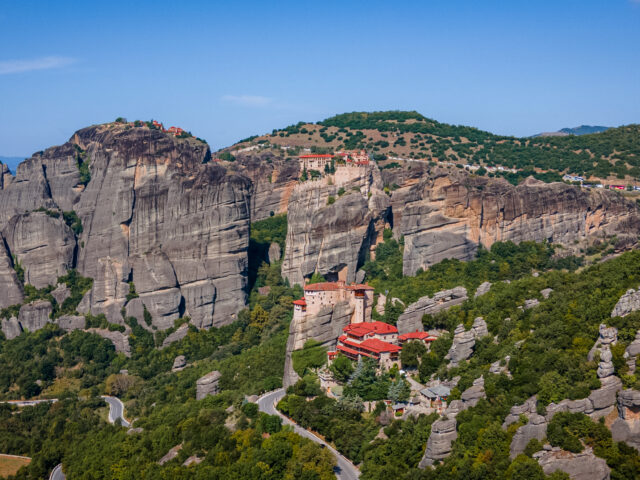Malakasiotis Valley
Address
Malakasi 422 00
GPS
39.768230410543, 21.411674753166
Following the Kalambaka – Ioannina national road, the visitor ascends towards Chasia mountains. On the slopes of Kratsovo or Vigla Mt, at an altitude of 750 m, the visitor can enjoy the panoramic view of the area around the Malakasiotis valley. The road passes through Megali Kerasia, Orthovouni and Trygona, offering a panoramic view of the Malakasiotis valley. On the south side of the valley we can visit the villages of Matoneri, Kalomira and Elafi. The Malakasiotis river, together with the Ionas river (Mourganis R.) constitute the initial branches of the Pinios river which is formed after their confluence in the Thessaly plain before Kalambaka. The Malakasiotis Valley crosses the volcanic rocks of the Pindos Ophiolite Complex, which have been tectonically placed on top of the sedimentary formations of the Pindos zone, which occur lower in the valley.
The various rocks and formations encountered in the road exposures of the Malakasiotis Valley are mapped as a series of different units, part of the Pindos Ophiolite Complex. These units (Avdella, Aspropotamos, Dramala) are placed as tectonic plates on top of the Pindos flysch. The Pindos ophiolites represent parts of the Tethys oceanic lithosphere that were emplaced on top of the Pindos flysch during the Tertiary. The ophiolitic rocks of Pindus include basic and ultrabasic igneous rocks (upper mantle peridotites, gabbros, basic and ultrabasic igneous rocks, columnar lavas, massive lavas, pillow lavas, and basic breccias), metamorphic rocks derived from the metamorphic sole (amphibolites, greenschists, and meta-sediments) as well as deep-sea sediments and turbidites (pelagic limestones, sandstones, calcareous sandstones, and microbreccias, mudstones, green and red bedded and nodular radiolarites). The volcanic rocks (lavas and veins) of the ophiolites were formed under mid-ocean ridge conditions, in an ocean east of the Pindus Zone. A similar environment today is the lava outcrop and formation of oceanic crust in the center of the Atlantic Ocean. Intense tectonic flaking and deformation has led to the local fragmentation of the various formations and the presence of fault structures that can be seen along the road. The age of the rocks of these formations is mainly Jurassic, with a range ranging from Triassic to Upper Cretaceous.

